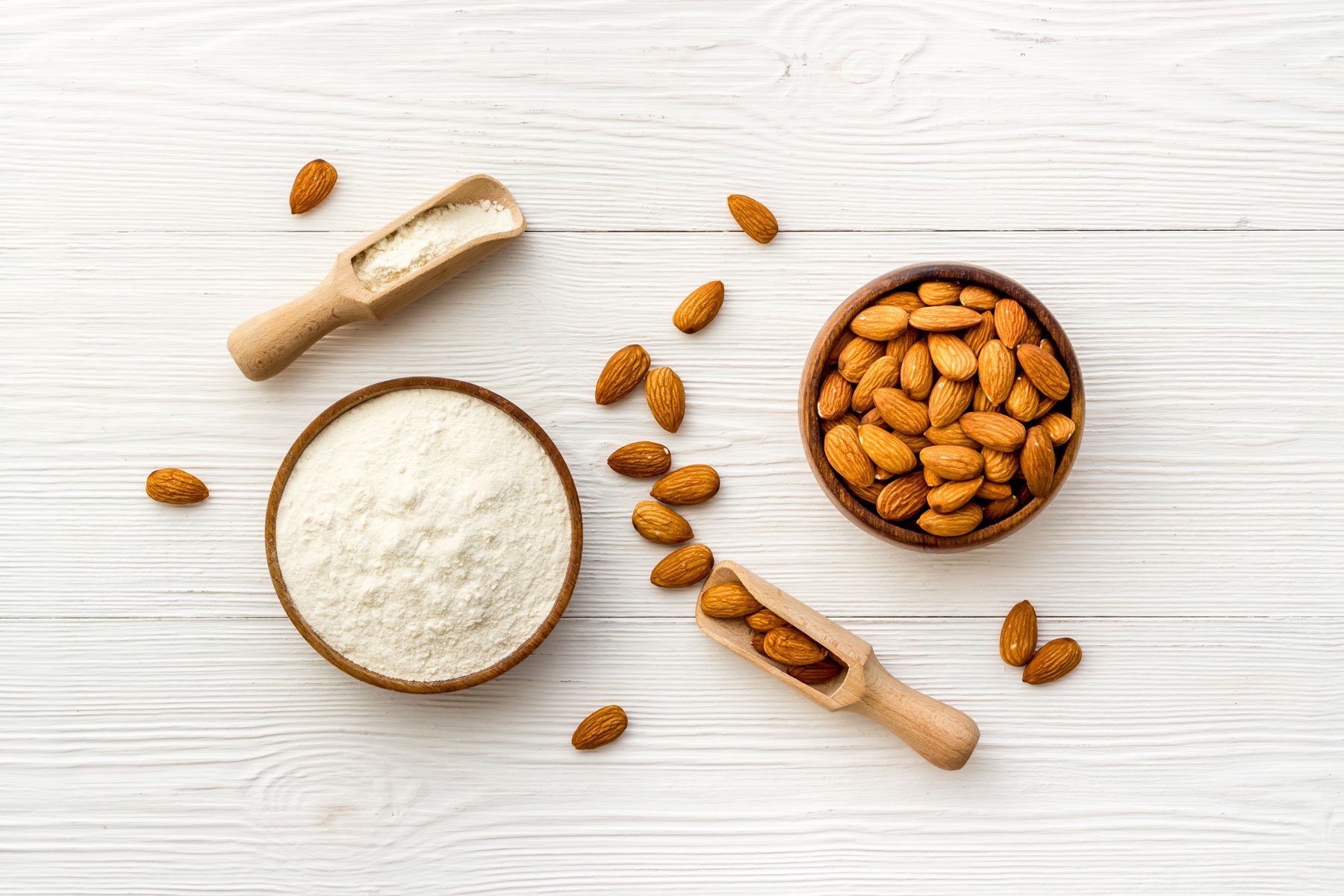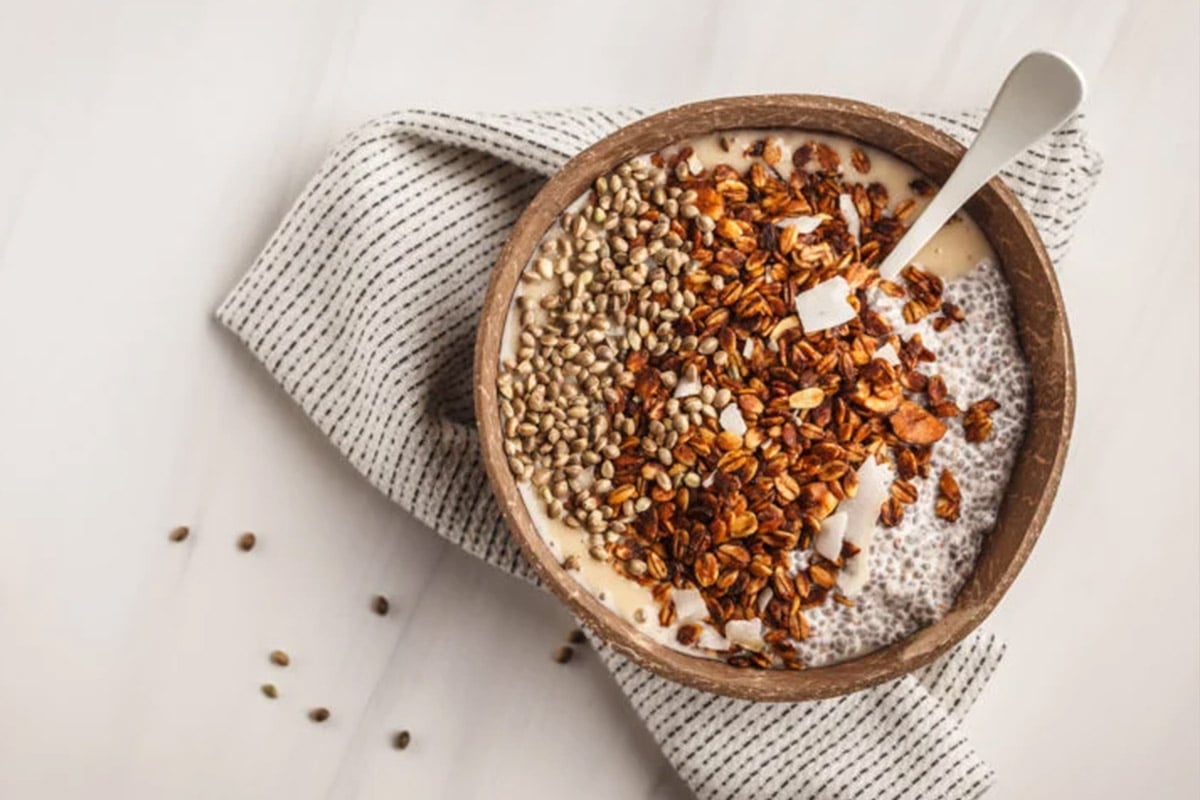The basic definition of a low-carbohydrate diet is straightforward: It contains fewer carbohydrates—and, as a result, a higher proportion of protein and fat—than most mainstream dietary guidelines recommend.
The confusion lies in deciding what an optimal low-carb diet looks like and how this may differ depending on whether you’re trying to lose weight, prevent diabetes, or reach another health goal. (Hint: You want to eat the right carbs with the right combination of other nutrients.) How you formulate your low-carb diet may also determine any potential health risks of your plan.
This guide will help you decide if a low-carb diet is best for you and the best way to approach it.
What is a low-carb diet?
Low-carb diets involve limiting carbs—but the term “low carb” is a bit nebulous, with people using it to describe a wide range of carbohydrate intakes. While no definitive consensus exists, the authors of a low-carbohydrate research review, along with other metabolic health experts, suggest defining a low-carb diet as one consisting of about 26 or 30 percent of total calories from carbs, respectively—or less than 130 grams (g) of carbohydrates on a 2,000 calorie diet. Some researchers distinguish between very low-, low-, moderate-, and high-carbohydrate diets. For example, the authors of the research review define these as:
- Very low-carbohydrate diets consist of less than 10 percent of total calories from carbs, or less than 50 g per day on a 2,000-calorie diet. A keto diet is considered very low-carb.
- Low-carbohydrate diets consist of less than 26 percent of total calories from carbs, or less than 130 g per day on a 2,000-calorie diet.
- Moderate-carbohydrate diets consist of 26 to 44 percent of total calories from carbs, or 130 to 220 g per day on a 2,000-calorie diet.
- High-carbohydrate diets consist of 45 percent or more of total calories from carbs, or more than 225 g per day on a 2,000-calorie diet. To put things in perspective, the 2020-2025 Dietary Guidelines for Americans recommend that 45 to 65 percent of total daily calories come from carbohydrates, which some metabolic health experts consider unnecessarily high.
Popular low-carb diets
Though each has unique rules and carbohydrate recommendations, several popular diets fall into the “low-carb” category. Here are a few plans:
- Ketogenic: This very low-carb, moderate-protein, high-fat eating pattern typically consists of 15–10 percent carbs, 10–20 percent protein, and 70–80 percent fat. Often, this equates to less than 50 g of carbohydrates per day—but some plans suggest even lower, around 20 to 30 g per day. Eating this way causes your body to shift from burning predominantly glucose for fuel to burning fat—a state known as ketosis. Keto tends to be higher in fat and lower in protein than other low-carb plans since protein may be converted to glucose in the absence of carbs, and this may prevent ketosis.
- Atkins: This low-carb diet encourages the intake of fiber-rich foods by focusing on net carbs (total carbs minus fiber, allulose, erythritol, and half of other sugar alcohols). There are three different Atkins plans: Atkins 20, Atkins 40, and Atkins 100, which allow you to consume 20, 40, and 100 grams of net carbs, respectively. While Atkins 100 can be maintained indefinitely, Atkins 20 and 40 are meant to start low to support weight loss and then gradually increase net carbs up to a max of 80-100 g per day (from whole-food sources such as vegetables, fruits, legumes, and whole grains). This is meant to promote weight maintenance and boost fiber/nutrient intake. The diet also pushes Atkins-branded low-carbohydrate packaged foods, which are highly processed—although you’re not required to consume these products.
- South Beach: This modified low-carb diet focused on weight loss has three phases. The initial phase significantly limits sugars and refined carbohydrates and focuses on lean proteins, high-fiber vegetables, and unsaturated fats. The middle phase reintroduces some carb sources (fruits, starchy vegetables, whole grains). The maintenance phase restricts total carbohydrate intake to no more than 28 percent of total calories, or about 140 g per day.
- Whole30 or Paleo: These diets—which aim to model the way people ate during the Paleolithic Age—don’t put a specific limit on carbs, but they tend to be lower than the standard American diet due to what they exclude. Both typically involve avoiding refined sugars, dairy, grains, and legumes. Whole30 also avoids all forms of added sweeteners and alcohol.
- Carb Cycling: While not an official diet, a carb-cycling approach refers to eating low-carb or keto most of the time with short periods of higher-carb intake. For example, every week, you might eat keto for six days followed by one day of higher-carb intake (1.5 to 2 times your typical carb intake) to help fuel a strenuous workout or simply to prevent palate boredom, which may support long-term adherence.
The potential benefits of a low-carb diet
People may choose to eat low-carb for a variety of reasons. Here’s what the research shows about the actual benefits.
Weight loss
Several studies have found that low-carbohydrate diets promote weight loss better than higher-carb diets in the short term and have similar effects to other dietary approaches over extended periods.
In a 2020 meta-analysis of 38 studies, people on low-carb diets experienced more significant weight loss (an average loss of three pounds more) at six to 12 months than people on low-fat, high-carb diets. However, there was no significant difference between the groups after 12 months. More recently, a 2022 meta-analysis of 25 studies on people with obesity found that low-carb diets were associated with greater weight loss (an average loss of 5.7 pounds more) at three to four months and six to eight months than balanced control diets. But again, the difference was no longer significant after 10 months. Per the authors of the first meta-analysis, the waning effectiveness of low-carb dietary approaches (and diets in general) may be due to poor adherence by some people.
Studies included in these meta-analyses differed in the specific foods and percentage of calories from carbohydrates consumed, so it’s difficult to draw firm conclusions about low-carb diets and weight loss. But there are a few potential reasons they may be effective if maintained:
- Well-formulated low-carb diets (e.g., ones that swap out processed, refined carbs for fiber-rich, non-starchy plant foods and quality proteins and fats) may be more satiating as they minimize spikes and subsequent dips in blood sugar that can lead to hunger.
- By reducing carb intake and subsequent elevations in blood sugar, you also decrease insulin secretion. Insulin is an essential anabolic (or storage) hormone. When chronically elevated due to a high-carb, high-sugar diet, it can promote the conversion of excess glucose to body fat and make it more challenging to burn stored fat, contributing to obesity and other metabolic consequences. On the other hand, lowering carbohydrate intake—and pairing the carbs you eat with blood sugar-buffering fiber, protein, and fat—can reduce insulin secretion to healthier levels and counter these effects.
- Very low-carbohydrate diets, including ketogenic diets, may also reduce appetite. While the exact mechanisms are unclear, experts believe it has to do with the appetite-suppressing effects of ketones like beta-hydroxybutyrate, which are associated with decreased levels of ghrelin (a “hunger hormone” released by the stomach) and increased secretion of gut hormones like cholecystokinin, which promote fullness.
- A preliminary study from 2018 suggests that low-carb diets may increase calorie burn during weight-loss maintenance, potentially making it easier to keep weight off. In the study, 164 people who had lost 12 percent of their body weight were put on a maintenance diet of either high, moderate, or low carbohydrate intake (60 percent, 40 percent, and 20 percent of calories from carbs, respectively). Compared to the high-carb group, on average, the moderate-carb group burned 91 more calories daily, and the low-carb group burned 209 more calories. It’s worth noting that there are disagreements about the conclusions of this study, however.
Type 2 diabetes and metabolic syndrome
Low-carb diets also offer benefits for people with prediabetes or metabolic syndrome (MetS, a cluster of conditions that increases diabetes, stroke, and cardiovascular disease risk).
In a 2022 study, overweight people with untreated prediabetes and diabetes followed a low-carb diet (less than 40 g per day for three months, then less than 60 g per day for another three months) featuring non-starchy veggies, lean meats, and healthy fats. They lost an average of 13 pounds and experienced a drop in fasting blood glucose and HbA1C levels that corresponded with a 60 percent reduced risk of developing diabetes over the next three years. Eating fewer carbs and losing fat mass can both help reduce insulin resistance, and experts believe these factors may have led to improved blood sugar control among study participants.
Weight loss alone has been shown to help prevent the progression of prediabetes, and MetS to full-blown Type 2 diabetes, but one study from 2018 found that a diet low in carbs and high in unsaturated fats was more effective at improving blood glucose levels than a high-carbohydrate, low-fat diet—despite both resulting in comparable weight loss.
Even in the absence of weight loss, low-carb diets may promote metabolic health. In a 2019 study, people with obesity and MetS consumed a weight-maintenance diet that was high, moderate, or low in carbohydrates (57%, 32%, and 6% of total calories, respectively). After four weeks, the low-carb diet was more effective at reversing markers of MetS, particularly high triglycerides and low HDL cholesterol.
Cardiovascular disease risk
Going low-carb may curb some risk factors for cardiovascular disease. A 2019 meta-analysis of 12 randomized studies found that low-carbohydrate diets were significantly associated with an initial increase in beneficial HDL cholesterol and decreased body weight, diastolic blood pressure, and triglycerides. However, after about two years, there was no significant association between low-carb diets and cardiovascular risk. Like the weight-loss studies, the waning benefits could be due to poor low-carb adherence, which may skew results. Whatever the reason, we need more high-quality clinical trials on the long-term cardiovascular effects of low-carb diets.
Other studies, including the previously mentioned 2019 MetS study and 2020 meta-analysis on weight loss, also link low-carb diets with increased HDL and reduced triglycerides. HDL is considered cardioprotective since it helps absorb cholesterol from the bloodstream and carry it to the liver, where it can be processed and then removed from the body. Triglycerides are a type of circulating fat in the blood that can increase risk for cardiovascular events. While dietary fat contributes somewhat to triglycerides, your liver also makes triglycerides when you consume excess calories, particularly from carbs.
What to eat on a low-carb diet
Following a low-carbohydrate diet doesn’t mean eating no carbs. Carbs break down into glucose when you eat them, and extra glucose raises your blood sugar, but the quality and quantity of a carb source (and what it’s paired with on your plate) also matters. Some calculate net carbs, or total carbs minus the indigestible carbs from fiber and certain sugar alcohols, to help choose foods, but the math is not necessary if you follow some basic guidelines.
Foods to avoid on a low-carb diet
In general, the more processed and refined a carbohydrate-containing food is, the more likely it is to spike your blood sugar and negatively impact metabolic health, says registered dietitian Stephanie Greunke, MD, RD. Processing something like wheat removes much of the food’s natural fiber which would help slow digestion and buffer blood sugar spikes. So make a point to avoid things like candy, soda, juices, and foods containing sweeteners (sugar, honey, maple syrup, etc.) or made with grain-based flours (crackers, cookies, breads, pastas, cereal, tortillas).
Foods to limit (or eat strategically) on a low-carb diet
Depending on how low-carb you’re going, you may want to limit your intake of certain whole foods such as high-sugar fruits (bananas, mangoes, grapes), starchy vegetables (butternut squash, sweet potatoes, white potatoes, corn, parsnips), whole grains (quinoa, oats, rice, amaranth, millet), and legumes (beans and lentils) due to their higher carbohydrate content. If you consume them, be mindful of portion size to stay below your desired carb threshold and pair them with a protein and fat source to buffer their impact on blood sugar.
Foods to eat regularly on a low-carb diet
Non-starchy vegetables (green beans, cabbage, mushrooms, cucumber, leafy greens, cauliflower, brussels sprouts, broccoli, eggplant, zucchini, tomatoes, onions, bell peppers), fermented vegetables (sauerkraut, kimchi, dill pickles), and low-sugar fruits (strawberries, blueberries, blackberries, raspberries, kiwis) are rich in blood sugar-balancing fiber and metabolism-friendly micronutrients and relatively low in total carbohydrates. Non-starchy veggies should fill up the bulk of your plate at meals, says registered dietitian Zoë Atlas, MPH, RD.
For meals and snacks, pair these carbs with high-quality sources of protein and fat. Good sources of protein include meat, fish, eggs, plain Greek yogurt, cottage cheese, tofu, tempeh, edamame, hemp seeds, and protein powders. Good fat sources include high-quality cooking oils and fats (olive oil, avocado oil, butter, ghee) and whole-food fat sources like avocados, olives, nuts, seeds, salmon, sardines, and full-fat yogurt. Get plenty of plant-based proteins and fats, too—some research suggests swapping out carbs in favor of plant fats and proteins (but not animal-derived ones) may enhance longevity.
Keep in mind, however, that while processed proteins and fats (like cold cuts, salami, bacon, and pepperoni) may be low-carb, they aren’t metabolically healthy in excess. These foods contain compounds and additives that may set the stage for inflammation and oxidative stress and increase risk of chronic diseases such as cardiovascular disease and cancer. So try to avoid these foods.
Unless you’re trying to achieve nutritional ketosis, you don’t have to methodically track your protein and fat intake on a low-carb diet, but there are some tips to consider.
- With protein, a good general rule for metabolic health is 20 to 30 grams per meal and enough per day to support your activity levels and health goals (typically somewhere between 1.2 to 2.0 g/kg/day, depending on the individual).
- Your ideal fat intake is also individual, but you’re probably getting enough if you cook your veggies and dress your salads with a healthy oil or fat source and regularly eat whole-food fat sources as part of your meals and snacks.
As for counting calories? That’s up to you, but once you’ve transitioned to a well-formulated low-carbohydrate diet with sufficient fiber, protein, and fat—all of which support satiety—you may find that you naturally begin to self-regulate your food intake without overeating.
The potential drawbacks (and gray areas) of a low-carb diet
While there are positive effects of reducing your carb intake, at the same time, some science suggests this eating pattern may have risks.
Inconsistent impact on LDL cholesterol
A somewhat gray area is the impact of low-carb diets on LDL cholesterol—high levels of which have been associated with cardiovascular disease and stroke. One study found that low-carb diets leave LDL levels relatively unchanged, others suggested that low-carb diets decrease LDL levels, and another suggested that very low-carb diets increase LDL significantly in a subset of lean people considered “lean mass hyper-responders.” For this reason, it may be a good idea to get a baseline fasting lipid profile followed by periodic testing when transitioning to a low-carb diet to see how you respond.
The good news is that a growing body of research suggests low-carb diets may help transform LDL cholesterol particles into a larger, more benign form. In the 2019 study on people with MetS mentioned earlier, there was no significant change in overall LDL cholesterol levels, but there was an increase in peak LDL particle size and a corresponding decrease in the number of small, dense LDL particles. These small particles are widely believed to be the most dangerous form, as they are the most likely to contribute to arterial plaque buildup. A 2021 meta-analysis of 38 randomized trials also found that low-carb interventions increase LDL peak particle size and decrease the number of total and small LDL particles.
Constipation (when you skimp on fiber)
Some people complain of constipation on very low-carbohydrate diets like keto. This may be due to decreased fiber intake from restricting foods like whole grains and legumes. But, as described above, a low-carb diet can include sources of fiber such as non-starchy veggies, nuts, and seeds. Don’t forget to drink plenty of water, too.
Difficulty with adherence
Some people find it challenging to maintain a low-carb diet for a long period, particularly very low-carb or keto diets—and this poor adherence may be one reason some of the long-term data on low-carb diets for weight loss and cardiovascular health are a bit unclear.
Like any restrictive diet, a low-carb diet might create an all-or-nothing mentality, making some people more likely to give up altogether if they experience a minor setback. Poorly formulated low-carb diets might also need more essential nutrients, like fiber, which could leave you hungry or unsatisfied. For these reasons, it’s important to look at a low-carb diet as more of a lifestyle than a quick fix and tailor it to your personal food and flavor preferences. Don’t be afraid to switch things up either—for example, if you crave flexibility, maybe try a carb-cycling approach in which you eat low-carb most of the time, with occasional short periods of higher-carb intake.
Should anyone avoid going low-carb?
People who may need more carbohydrates for optimal health include:
- Children
- Nursing and pregnant women (due to significantly increased nutrient and caloric demands)
- Very lean, active people (since very low-carb diets have the potential to throw certain hormones, such as leptin, out of whack)
- Athletes concerned with speed and performance (although there are exceptions, such as elite athletes who have become keto-adapted)
- Due to the restrictive nature of certain low-carb dietary approaches, people with a history of disordered eating should also avoid going low-carb (or starting any diet, for that matter) without first talking with an appropriate healthcare provider.
These groups don’t necessarily need to eat high-carb, Greunke says. They may just need to scale up to a more moderate intake that supports their physical demands.
Can you be metabolically healthy without being low-carb?
You don’t need to cut carbs to be metabolically healthy—as long as you focus on nutritious foods and engage in eating habits that minimize blood sugar spikes. To do this, you need to eat the right carbs in reasonable quantities with the right combination of other foods. Follow these four strategies (and learn other healthy ways to eat carbs here):
- Focus on unrefined, unprocessed carbs rich in fiber and other nutrients supporting metabolic health. These include anything you’d eat on a low-carb diet and carb-rich whole foods like sweet potatoes, apples, beans, and whole grains.
- Always enjoy carbs with a source of healthy fat and protein to promote more gradual blood glucose responses (think: an arugula salad topped with roasted sweet potato, grilled chicken, chickpeas, and a drizzle of olive oil and vinegar).
- Go on a quick walk after eating a higher-carb meal—this can significantly lower blood sugar levels compared to standing or sitting in one place.
- Check how you respond to specific carbs (using a continuous glucose monitor or a fingerstick test) and adjust your diet based on that. Some people have different rises in blood sugar after eating the same carb-containing food.
 See how what you eat affects your metabolic health
See how what you eat affects your metabolic health
The best way to understand how a low-carb diet can improve your blood sugar is with a continuous glucose monitor and an app like Levels to help you understand your data. Levels members get access to the most advanced CGMs and personalized guidance to build healthy, sustainable habits. Click here to learn more about Levels.









